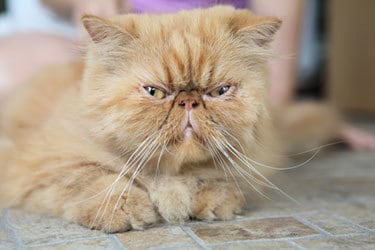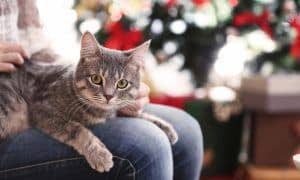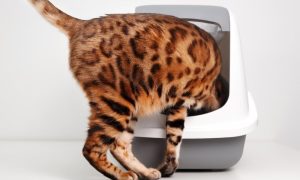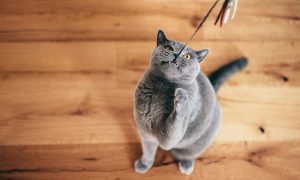 Singled out for its prominent head and long, dense, silky coat, the elegant Persian cat has been one of the world’s all-time favourite pets. Popular for its unique good looks, kind disposition, and easy-going personality, this medium-to-large stocky breed is believed to have sprung from the long-haired felines taken along from Persia (now known as Iran) to Europe in the 17th Century. The Persian cats have extraordinary cobby profile marked by its massive rumps and short, thick legs. Their head is round and broad in skull, and their pansy-like face is notably flat. They have a somewhat perky-upturned nose and a very short muzzle. The breed’s ears are tiny and just like their large paws, these are tufted with fur. Also, the Persian cat’s neck is short and thick which is enhanced by a mane-like ruff, and their tail is quite short and bushy. While the solid silver is presently the trendiest coat color for this breed, other shades like black, smoke, cream, and blue are have also been popular.
Singled out for its prominent head and long, dense, silky coat, the elegant Persian cat has been one of the world’s all-time favourite pets. Popular for its unique good looks, kind disposition, and easy-going personality, this medium-to-large stocky breed is believed to have sprung from the long-haired felines taken along from Persia (now known as Iran) to Europe in the 17th Century. The Persian cats have extraordinary cobby profile marked by its massive rumps and short, thick legs. Their head is round and broad in skull, and their pansy-like face is notably flat. They have a somewhat perky-upturned nose and a very short muzzle. The breed’s ears are tiny and just like their large paws, these are tufted with fur. Also, the Persian cat’s neck is short and thick which is enhanced by a mane-like ruff, and their tail is quite short and bushy. While the solid silver is presently the trendiest coat color for this breed, other shades like black, smoke, cream, and blue are have also been popular.
Temperament
Persian cats are said to be highly devoted to their human friends, but can be quite selective when it comes to granting that honor. Pet owners have to earn this adorable cat’s trust and love. While Persian cats are very affectionate pets that love to be nuzzled and fussed over, they are not the sort that will bother you for attention the way some cats will. Because of the breed’s sweet temperament and docility, they generally make perfect companions for owners who yearn for a mild-mannered pet. Although dubbed as the “furniture with fur” because of its tendency to simply hang about and remain deskbound for a long time, many fanciers would argue that the Persian cat is highly intelligent and even as playful like other felines; just not as active and curious.
Grooming
Persian cats normally have a high-maintenance coat. You have to groom them on a daily basis in order to keep their fur from developing nasty tangles and unappealing mats. This shall include regular bathing, combing, and brushing sessions. Also, their large eyes are prone to weeping so wiping the area around it with the use of soft cotton balls and warm water might be needed from time to time to prevent unsightly staining or clumping.
Health Concerns
Persian cats are fairly healthy felines, with an average life span of 15 years or more. Nevertheless, the breed is still predisposed to a variety of health issues. Older male members of this line, for instance, are known to be at risk of developing hypertrophic cardiomyopathy, while females are prone to peritoneopericardial diaphragmatic hernia. Also some varieties of this breed, like the Blue-eyed White Persian, is susceptible to deafness. The Blue Smoke Persians, on the other hand, are predisposed to skin conditions like dermatophytosis, seborrhea, systemic lupus erythematosus and Chediak-Higashi syndrome. Other health problems that owners might encounter with their Persian cat include perioular crusting, epitrichial cyst, facial fold pyoderma, and skin tumor. Eye problems may also be listed to the bugs that you have to watch out for: entropion, coloboma, lacrimal punctual aplasia, corneal sequestration, idiopathic epiphora, cataracts, lysosomal storage disease, and retinal degeneration.
Best Environment
Persian cats tend to shed all year-round and so they have to be kept exclusively indoors to protect their lovely coat at the same time keep them away from the usual dangers outside the comforts and safety of your home.



















